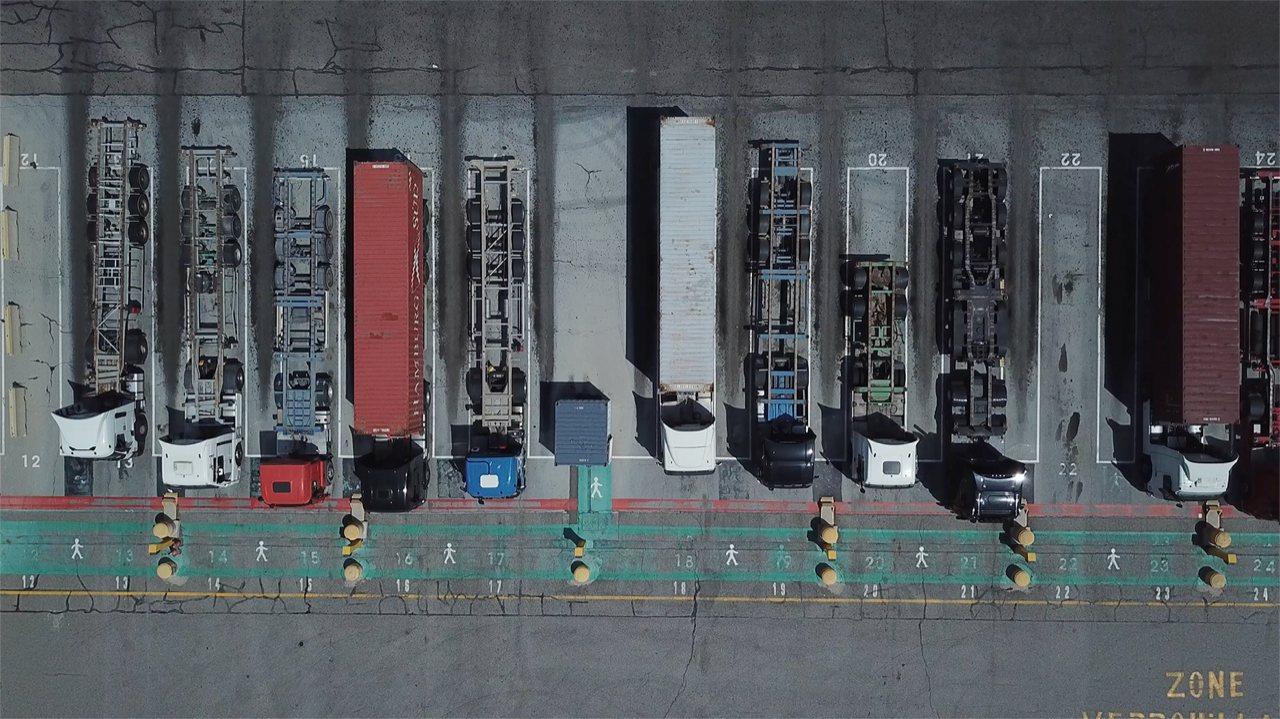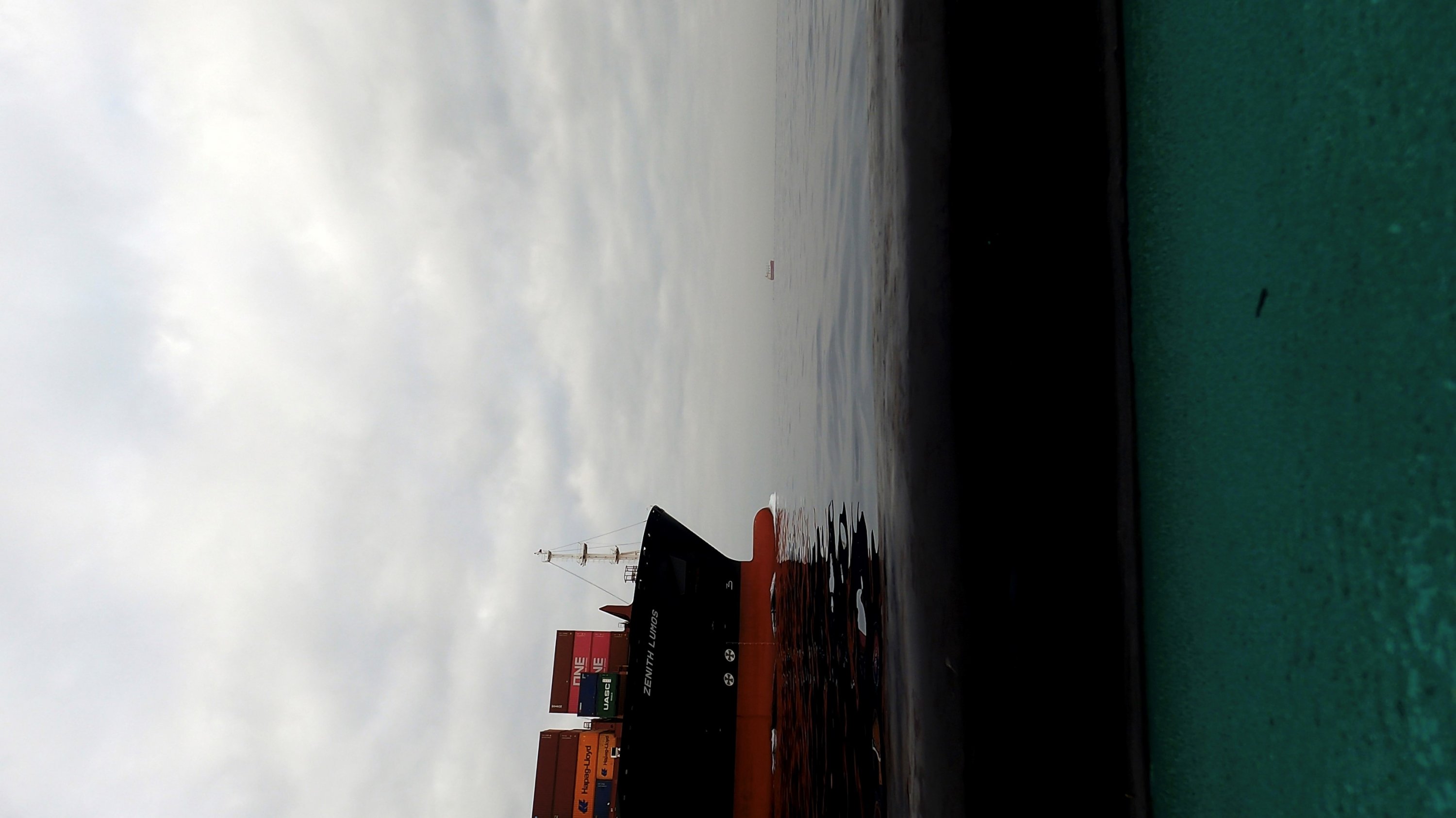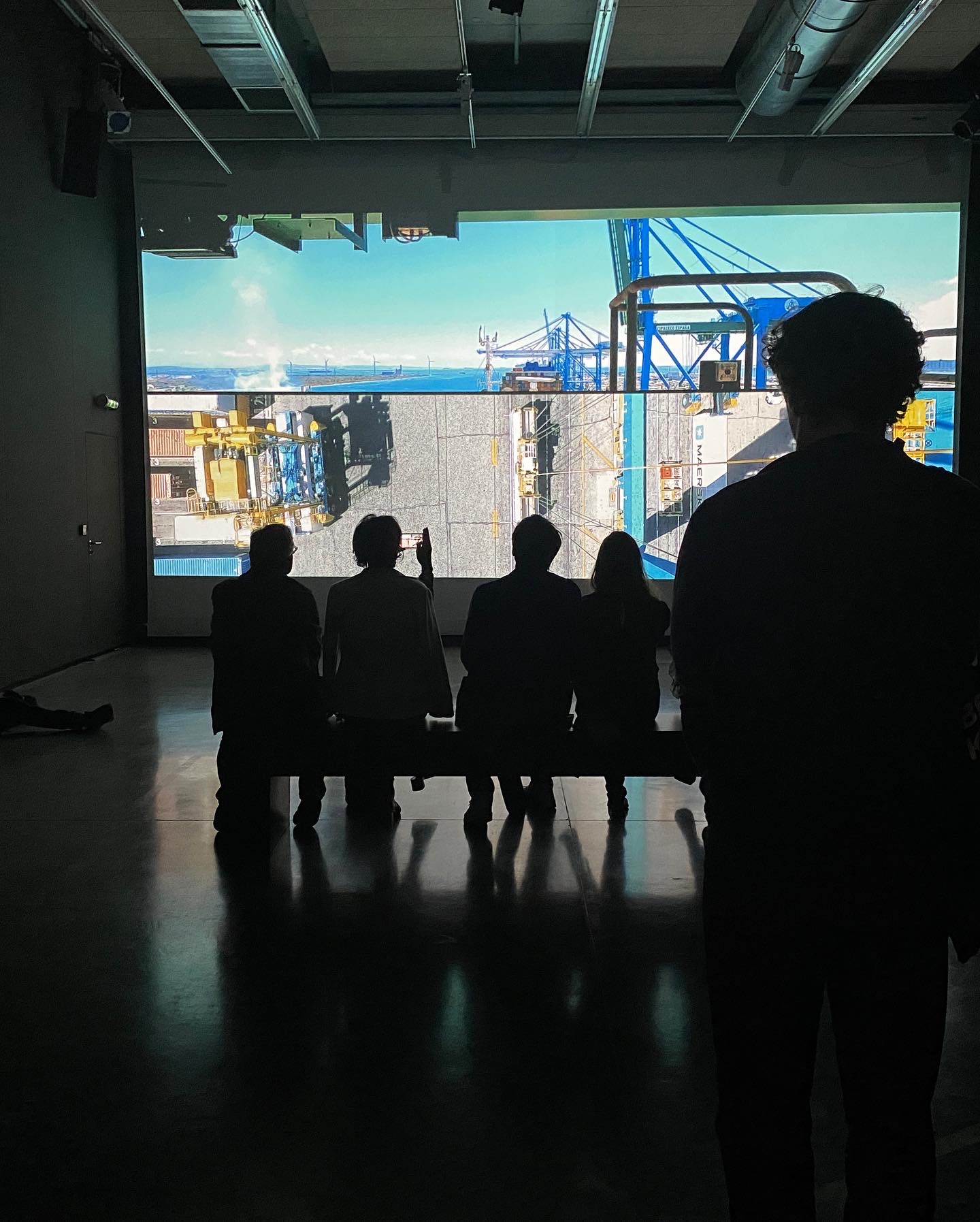
80 per cent of international goods today are shipped in containers. Some of them multiple times, some only in parts, back and fro between the continents. iPhones from China, sneakers from Tunisia, T-shirts from Bangladesh, rubber ducks from Malaysia... But even though it is the foundation of the globalised world as we know it, the container itself remains all but invisible. At the same time, the image of the container has become emblematic of globalisation.
The exhibition “La Chorégraphie des marchandises” examines the tension between visibility and invisibility not only of the container, but by extension also of society in general. For what does an image of, say, an office, a factory, a warehouse or a container, reveal about the social relations involved?
Images like this capture only the surface of things – in the case of the container literally only its steel sheets, which conceal the goods inside, but even more so the socio-economic relations in which it is involved or which it even enables. For modern globalisation wouldn’t be possible without the container, which has revolutionised not only the work processes in harbours and the flows of international trade, but also the capitalist economy as a whole. Container terminals today seem to be guided by an “invisible hand”, realised in a computer-based artificial intelligence, that autonomously guides ships and plans the loading and unloading of containers, seemingly resolving all the problems by itself and leaving the human beings as mere spectators to the ever-optimised flow of goods.
“La Chorégraphie des marchandises” presents a multi-channel film installation connects and juxtaposes the operations on container ships, in harbours and distribution centres, the piloting of vessels, the organisation and modelling of flows of ships and containers, the history of trade, the reification of social relations, the simulation of operations, the fetishisation of objects, and the mystification of society – in order to create an image of the container as the pivotal object of the global economy today.

Thursday 2 of November at 8 : 30 pm
Cinematographic performance as part of theire residence at Montévidéo.
With the actor Robert Rizo.
In the performance “The container fetish – episode 2” a human being at the end of the global supply chain will act as a medium, translating the wondrous world of goods to us. We are acquainted with the hidden secrets of commodities, becoming increasingly haunted and beleaguered by their voices and tensions. Maybe mythical and ghostly figures could come to rescue?
Monday 6 of November at 4 :00 pm at the MucemLab
Lecture by Romana Schmalisch and Robert Schlicht







